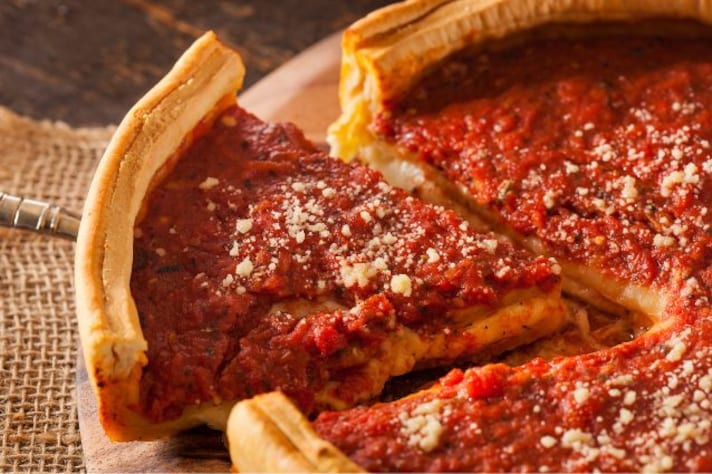7 Fun Facts You Probably Don’t Know About Chicago’s Deep Dish Pizza
Chicago deep dish pizza, invented in 1943, flips traditional pizza with cheese beneath sauce and requires a unique, cornmeal-rich dough. Its creation sparked diverse styles and debates on authenticity, demonstrating its culinary impact beyond Chicago.

Pizza, universally adored and endlessly customizable, has been embraced and reinvented across the globe. Among the myriad iterations, one particularly hearty version stands out: Chicago's deep dish pizza. This culinary heavyweight is as much a part of the Windy City's identity as the Willis Tower or the Cubs. Born from innovation and a desire to do something different with a beloved classic, deep dish pizza has a rich history and some fascinating nuances that many outside Chicago might not know. Let’s dig into the delicious details and uncover some fun facts about this iconic dish.
The Invention and Its Inventors
Deep dish pizza was invented in 1943 by Ike Sewell and Ric Riccardo, the founders of Pizzeria Uno in Chicago. Contrary to popular belief, it wasn't just an attempt to create a thicker version of traditional pizza; Sewell and Riccardo aimed to make a meal that was heartier and more filling, combining their love for Italian cuisine with the robust culinary traditions of the Midwest. This led to the creation of a pizza that was more like a pie, with high edges and a generous amount of filling.

A Pie by Any Other Name
One of the most distinctive features of Chicago deep dish pizza is its construction, which inverts the traditional pizza formula. Instead of cheese on top, deep dish pizzas start with cheese laid directly on the dough, followed by meats and vegetables, and finally, covered with a thick layer of tomato sauce. This upside-down approach prevents the cheese from burning during the longer baking time required to cook through the deep crust.
Not Just Any Dough
The dough used in a Chicago deep dish pizza isn't your typical pizza dough. It's made with cornmeal or semolina, which gives it a distinctly yellow hue and a slightly cornbread-like flavor. Additionally, the dough is more oil-rich, contributing to a flakier texture and a buttery taste that sets it apart from its thin-crust cousins.
A Slow Cooker
Patience is a virtue, especially when it comes to baking a deep dish pizza. Unlike thin-crust pizza, which can be ready in a matter of minutes, a deep dish pizza requires a baking time of at least 30 to 45 minutes. This slow baking process ensures that the thick layers of toppings are cooked thoroughly, melding flavors together in a rich, satisfying way.

A Diverse Ecosystem of Styles
While Pizzeria Uno claims the title of the original deep dish pizza, many other establishments have created their variations, leading to a rich diversity within the deep dish category itself. From the stuffed pizzas of Giordano's to the buttery crust of Lou Malnati's, each pizzeria offers a unique take on the deep dish theme, contributing to an ongoing culinary conversation about what makes the perfect pie.
A Debate of Epic Proportions
The authenticity and supremacy of Chicago deep dish pizza are subjects of much debate among pizza aficionados. Some purists argue that it strays too far from pizza's Neapolitan roots to be considered part of the same family, while others celebrate it as an innovative American take on an Italian classic. This debate only adds to the mystique and popularity of the dish, making it a must-try for visitors to Chicago.
Beyond the City Limits
Though it originated in Chicago, the appeal of deep dish pizza has spread far and wide, with restaurants across the United States and even internationally adopting the style. This global spread speaks to the universal appeal of pizza and the particular charm of Chicago’s hearty take on it.
;Resize,width=767;)

;Resize,width=712;)

